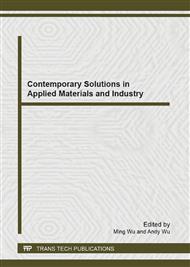p.540
p.546
p.550
p.554
p.559
p.565
p.571
p.577
p.582
Introduce an Evolutionary Programming Model - A Simulation of the Evolution of DNA Code
Abstract:
Via examining the evolutionary phenomena in biology, it is known that the evolution of life is based on the fact the variation of species is caused by the alteration of the DNA code sequence. If we assume the DNA molecular chain is a program code sequence, similar to the modern computer program code sequence, then the evolutionary phenomenon in biology can be simulated and it will be bring out an Evolutionary Programming Model (EPM). The main idea of this model lies in the two key conception: First is that two copies of the program code sequence in memory were loaded, then put one in the running status and the other in non-running status. Second step, use the reflection calculation to perceive the environment and adjust its functions in the running one. Then use Bytecode Engineering Technology to locate and modify the corresponding code segment of the non-running one, and consequently generate the next version program. This process can be repeated as needed, similar to the evolution of the DNA sequence in Nature. EPM enables the program to "sense" the running environment, to make corresponding adjustments in order to accommodate the running environment, and to generate the new version program at the same time. The EPM model will have widely application prospects in the field of artificial intelligence and is extremely important in guiding the future automatic program design and robotic evolution design.
Info:
Periodical:
Pages:
559-564
Citation:
Online since:
April 2013
Price:
Сopyright:
© 2013 Trans Tech Publications Ltd. All Rights Reserved
Share:
Citation:


